Peugeot 408 VS Volvo S60 – Specs, Efficiency & Price Comparison
Which model is the better choice – the Peugeot 408 or the Volvo S60? We compare performance (225 HP vs 455 HP), boot capacity (536 L vs 427 L), efficiency (15.10 kWh1.40 L vs 0.70 L), and of course, the price (34300 £ vs 42500 £).
Find out now which car fits your needs better!
The Peugeot 408 (SUV) is powered by a Plugin Hybrid, Electric or Petrol MHEV engine and comes with a Automatic transmission. In comparison, the Volvo S60 (Sedan) features a Petrol MHEV or Plugin Hybrid engine and a Automatic gearbox.
When it comes to boot capacity, the Peugeot 408 offers 536 L, while the Volvo S60 provides 427 L – depending on what matters most to you. If you’re looking for more power, you’ll need to decide whether the 225 HP of the Peugeot 408 or the 455 HP of the Volvo S60 suits your needs better.
There are also differences in efficiency: 15.10 kWh1.40 L vs 0.70 L. In terms of price, the Peugeot 408 starts at 34300 £, while the Volvo S60 is available from 42500 £.
Compare all the key specs now and find out which model fits your lifestyle best!
Peugeot 408
The Peugeot 408 captivates with its sleek and dynamic design, setting it apart in the competitive crossover market. Its interior offers a perfect blend of comfort and cutting-edge technology, creating an enjoyable driving experience. The model's efficient performance and modern features make it a compelling choice for those seeking both style and functionality in their vehicles.
details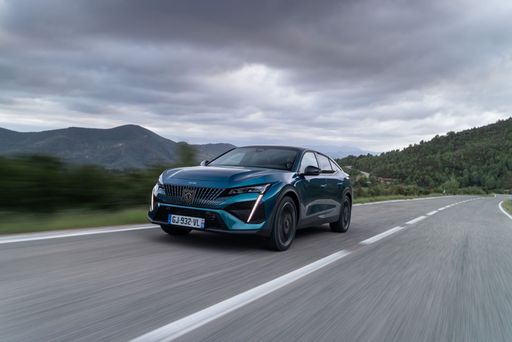 @ media.stellantis.com
@ media.stellantis.com
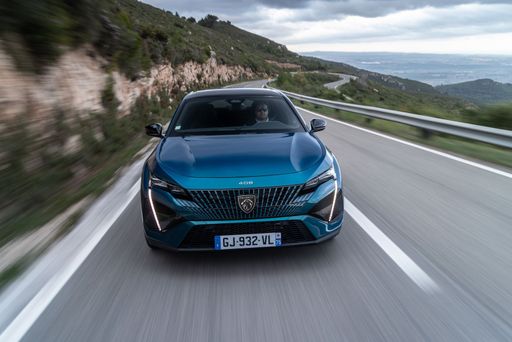 @ media.stellantis.com
@ media.stellantis.com
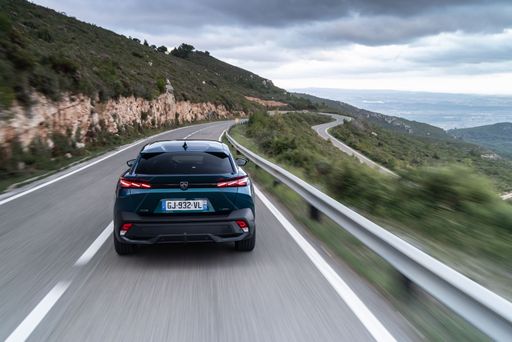 @ media.stellantis.com
@ media.stellantis.com
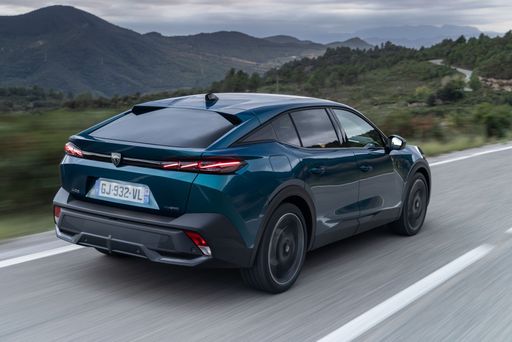 @ media.stellantis.com
@ media.stellantis.com
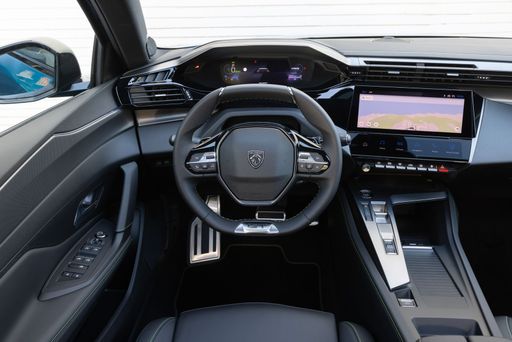 @ media.stellantis.com
@ media.stellantis.com
Volvo S60
The Volvo S60 combines sleek Scandinavian design with a focus on comfort and performance, offering a refined driving experience. Its interior is meticulously crafted, featuring high-quality materials and cutting-edge technology to enhance the journey for both driver and passengers. Safety remains a hallmark of the brand, with the S60 incorporating advanced systems designed to protect and assist on the road.
details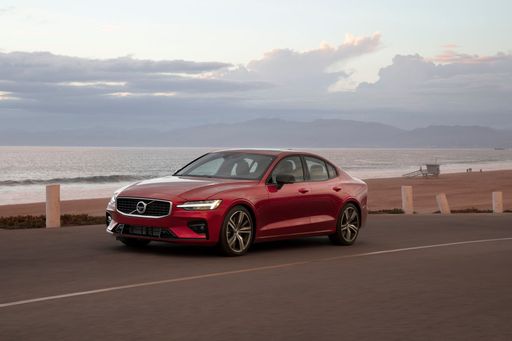 @ media.volvocars.com
@ media.volvocars.com
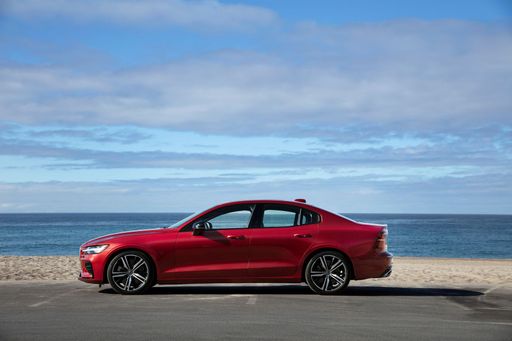 @ media.volvocars.com
@ media.volvocars.com
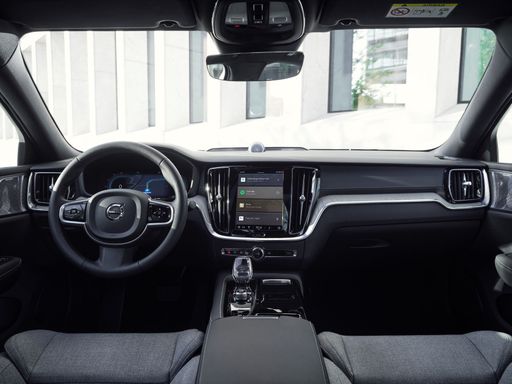 @ media.volvocars.com
@ media.volvocars.com
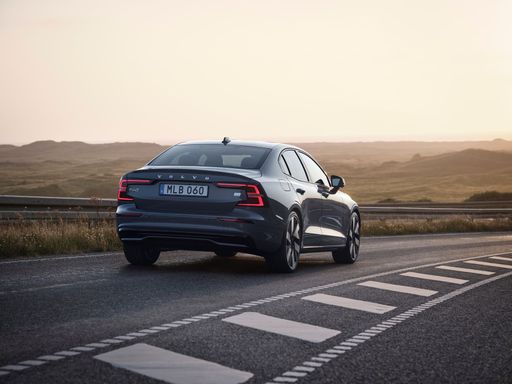 @ media.volvocars.com
@ media.volvocars.com

|

|
|
|
|
Costs and Consumption |
|
|---|---|
|
Price
34300 - 44400 £
|
Price
42500 - 65100 £
|
|
Consumption L/100km
1.4 - 5.1 L
|
Consumption L/100km
0.7 - 7.1 L
|
|
Consumption kWh/100km
15.10 kWh
|
Consumption kWh/100km
-
|
|
Electric Range
63 - 453 km
|
Electric Range
94 km
|
|
Battery Capacity
11.3 - 58.2 kWh
|
Battery Capacity
14.70 kWh
|
|
co2
0 - 114 g/km
|
co2
16 - 161 g/km
|
|
Fuel tank capacity
40 - 52 L
|
Fuel tank capacity
60 L
|
Dimensions and Body |
|
|---|---|
|
Body Type
SUV
|
Body Type
Sedan
|
|
Seats
5
|
Seats
5
|
|
Doors
5
|
Doors
4
|
|
Curb weight
1544 - 1879 kg
|
Curb weight
1715 - 2039 kg
|
|
Trunk capacity
471 - 536 L
|
Trunk capacity
390 - 427 L
|
|
Length
4687 mm
|
Length
4778 mm
|
|
Width
1848 mm
|
Width
1850 mm
|
|
Height
1478 mm
|
Height
1431 mm
|
|
Payload
371 - 456 kg
|
Payload
461 - 475 kg
|
Engine and Performance |
|
|---|---|
|
Engine Type
Plugin Hybrid, Electric, Petrol MHEV
|
Engine Type
Petrol MHEV, Plugin Hybrid
|
|
Transmission
Automatic
|
Transmission
Automatic
|
|
Transmission Detail
Automatikgetriebe, Automat. Schaltgetriebe (Doppelkupplung)
|
Transmission Detail
Automatic Gearbox
|
|
Drive Type
Front-Wheel Drive
|
Drive Type
Front-Wheel Drive, All-Wheel Drive
|
|
Power HP
145 - 225 HP
|
Power HP
197 - 455 HP
|
|
Acceleration 0-100km/h
7.2 - 9.4 s
|
Acceleration 0-100km/h
4.6 - 7.9 s
|
|
Max Speed
160 - 233 km/h
|
Max Speed
180 km/h
|
|
Torque
230 - 360 Nm
|
Torque
300 - 709 Nm
|
|
Number of Cylinders
4
|
Number of Cylinders
4
|
|
Power kW
107 - 165 kW
|
Power kW
145 - 335 kW
|
|
Engine capacity
1199 - 1598 cm3
|
Engine capacity
1969 cm3
|
General |
|
|---|---|
|
Model Year
2024 - 2025
|
Model Year
2022 - 2024
|
|
CO2 Efficiency Class
B, A, C
|
CO2 Efficiency Class
E, F, B
|
|
Brand
Peugeot
|
Brand
Volvo
|
Peugeot 408
The New Lion on the Block: The Peugeot 408
As Peugeot continues to innovate within the SUV segment, the latest iteration of the Peugeot 408 sets new standards in technology, efficiency, and design. With its cutting-edge engineering and innovative features, the Peugeot 408 is more than just a stylish SUV—it's a marvel of modern automotive technology. This article dives into the technical details and innovations that make the Peugeot 408 a highly compelling choice for consumers in the market for a new vehicle.
A Glimpse into the Engine Bay: Performance and Efficiency
The Peugeot 408 comes with a diverse range of powertrains that blend performance and fuel efficiency. Featuring a selection of petrol mild-hybrid, petrol, and plug-in hybrid options, the 408 caters to a variety of driving preferences. The engines have a power output ranging from 131 to 225 PS, ensuring that there's a version suited to both city commutes and highway cruising.
Fuel economy is a significant focus, with consumption figures spanning from an impressive 1.5 L/100km for the plug-in hybrid models to a moderate 6.1 L/100km for the traditional petrol engines. Additionally, the plug-in hybrid versions boast an electric range of up to 55 kilometres, ideal for reducing emissions during shorter journeys.
Ultimate Comfort and Technology in the Cockpit
Peugeot excels in creating interiors that provide both comfort and cutting-edge technology. The 408 doesn't disappoint in this regard. It offers a spacious cabin, accommodating up to five passengers, with high-quality materials and ergonomic designs that enhance the driving experience.
The infotainment system in the Peugeot 408 is state-of-the-art, featuring a responsive touchscreen interface, premium sound options, and seamless connectivity with smartphones. Advanced driver-assistance systems such as adaptive cruise control, lane-keeping assist, and automated emergency braking ensure that journeys are not only comfortable but also safe.
Design Meets Function: Exterior and Practicality
In the realm of exterior design, Peugeot has delivered a striking silhouette with aerodynamic lines and a robust SUV stance. Measuring 4687 mm in length, 1848 mm in width, and 1478 mm in height, the 408 boasts a dynamic presence on the road without compromising on practicality.
Practicality is further enhanced by a generous boot space that ranges from 471 to 536 litres, depending on the model, making it perfect for family trips or weekend getaways. A high payload capacity and thoughtfully designed storage solutions ensure that the Peugeot 408 remains versatile, able to adapt to various lifestyle needs.
Environmental Responsibility and Sustainable Driving
With a keen eye on sustainability, the Peugeot 408 offers an impressive CO2 efficiency rating. The plug-in hybrid versions, in particular, present a substantial reduction in carbon emissions, operating at as low as 33 g/km. This makes the 408 a viable option for environmentally conscious consumers seeking to minimise their carbon footprint.
The automaker's commitment to sustainability does not end at emissions. The materials used in the 408's construction are carefully selected to promote durability and recyclability, ensuring that the vehicle maintains a lower impact on the environment throughout its lifecycle.
Conclusion: The Perfect Blend of Innovation and Tradition
The Peugeot 408 is a remarkable illustration of Peugeot's ability to blend traditional automotive values with the latest technological advancements. Its innovative powertrains, luxurious interiors, and forward-thinking design make it a formidable contender in the competitive SUV market. Whether you prioritise fuel economy, driving performance, or cutting-edge technology, the Peugeot 408 is poised to meet and exceed expectations. As Peugeot advances into the future, the 408 leads the charge as a testament to the brand's relentless pursuit of excellence.
Volvo S60
The Volvo S60: A Symphony of Power and Efficiency
The Volvo S60 represents the seamless blend of Scandinavian design and cutting-edge automotive technology. With multiple engine variants, the latest S60 models offer a spectrum of performance options that cater to various driving preferences and efficiency needs.
Engine Options: Power Meets Sustainability
The latest Volvo S60 models are available with both mild-hybrid and plug-in hybrid engines, offering a choice between front-wheel and all-wheel drive systems. These engines deliver power ranging from 197 PS to an impressive 455 PS, giving drivers the ability to choose the right level of performance for their driving style. The S60 T8 PlugIn-Hybrid, with its all-wheel drive, stands out with a minimal fuel consumption of just 0.7 L/100km and an electric range of 94 km.
Technical Specifications: Advanced Engineering
Under the bonnet, the S60 features a robust 1969 cc engine with four cylinders, ensuring a smooth and powerful drive. For those who value acceleration, the S60 does not disappoint, reaching from 0-100 km/h in as little as 4.6 seconds, depending on the model variant. The car's maximum speed is capped at 180 km/h, adhering to Volvo’s commitment to safety.
Efficiency and Environmental Responsibility
Volvo has made strides in improving the environmental efficiency of the S60, with CO2 emissions ranging from 16 to 161 g/km. CO2 efficiency classes for the models vary between E and B, reflecting the brand's focus on reducing its environmental footprint. The advanced PlugIn-Hybrid models significantly cut down the emissions and fuel consumption, setting a benchmark for sustainable driving.
Design and Comfort: Scandinavian Elegance
The Volvo S60 encapsulates the aesthetic philosophy of Scandinavian minimalism. Its exterior dimensions of 4778 mm in length, 1850 mm in width, and 1431 mm in height give it a sleek, aerodynamic silhouette. Inside, the spacious cabin offers seating for five, packed with sophisticated features that enhance comfort and driving pleasure. The luggage compartment has a capacity ranging from 390 to 427 L, providing ample space for everyday needs.
Innovations in Safety and Technology
Volvo continues to embed state-of-the-art safety technology into the S60. Advanced driver-assistance systems, integrated seamlessly into the vehicle's architecture, provide increased security and peace of mind on the road. Additionally, features such as intuitive infotainment systems and connectivity options bring the latest in automotive technology to the driver's fingertips.
Conclusion: The Future of Dynamic Driving
The Volvo S60 is a testament to Volvo's commitment to innovation, safety, and sustainability. With a model range that accommodates diverse preferences and requirements, the S60 holds its ground as a leader in the premium sedan market. Whether you're drawn to its performance credentials, eco-friendly engineering, or sophisticated design, the Volvo S60 is a driving experience that captures the essence of modern luxury. Prices for this model range from €49,600 to €75,990, reflecting its premium positioning and extensive features.
The prices and data displayed are estimates based on German list prices and may vary by country. This information is not legally binding.
